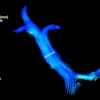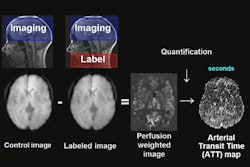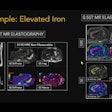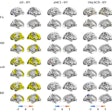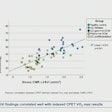Vigorous daily exercise may not only alleviate depression but might reverse volumetric brain loss observed in neuroimaging studies, according to research to be presented May 14 at the International Society for Magnetic Resonance in Medicine (ISMRM) 2025 meeting in Honolulu.
Particularly in the hippocampus and amygdala, volumetric deficits in the brain have been seen in individuals with depression, according to a team led by Saurabh Garg of independent imaging firm Prenuvo.
Garg and colleagues posited that physical activity could be considered a therapeutic intervention to improve brain structure in affected individuals, in addition to promoting mental well-being.
To that end, they examined the relationship between exercise intensity, brain volume changes, and depression among 6,458 study participants across four sites (Vancouver, San Francisco, Los Angeles, Minneapolis). Of these, 1,579 had depression. All underwent 1.5-tesla MRI exams.
Among the depressed group (mean age 50.1), 1,044 out of 1,593 engaged in moderate or vigorous exercise (439 moderate, 605 vigorous). In the nondepressed group (mean age 52.6), 1,180 were sedentary, 1,396 were moderately active, and 2,302 were vigorously active.
The team used the deep-learning tool FastSurfer to process T1 [magnetization-prepared rapid gradient-echo] MPRAGE sequences. The software tool reduced processing time from eight hours to 35 minutes, they said.
A one-way [analysis of variation] ANOVA revealed significant differences in means across the exercise groups, according to the authors. Depressed individuals had smaller brain volumes; however, those engaging in moderate to vigorous exercise had larger brain volumes.
"The brain regions most strongly associated with exercise differed between depressed and nondepressed individuals," the researchers noted. "In the depressed group, the lingual cortex showed the strongest association with physical activity, consistent with earlier studies. In contrast, the thalamus, though less commonly examined, was linked to exercise in the nondepressed group, aligning with emerging findings in the literature."
 Boxplot showing significantly larger brain volumes in individuals engaging in vigorous daily exercise compared to those with sedentary or moderate activity levels. The exercise intensity-brain volume pattern is similar across both depressed and nondepressed individuals.Caption and image courtesy of Saurabh Garg and ISMRM.
Boxplot showing significantly larger brain volumes in individuals engaging in vigorous daily exercise compared to those with sedentary or moderate activity levels. The exercise intensity-brain volume pattern is similar across both depressed and nondepressed individuals.Caption and image courtesy of Saurabh Garg and ISMRM.
Exercise has been shown to promote neuroplasticity and improve brain health, potentially reversing or mitigating the volumetric deficits observed in individuals with depression, the authors explained, suggesting that their results provide support for exercise-based interventions as a cost-effective and accessible approach to improving outcomes.
Check out AuntMinnie.com’s full coverage of ISMRM 2025 here.

